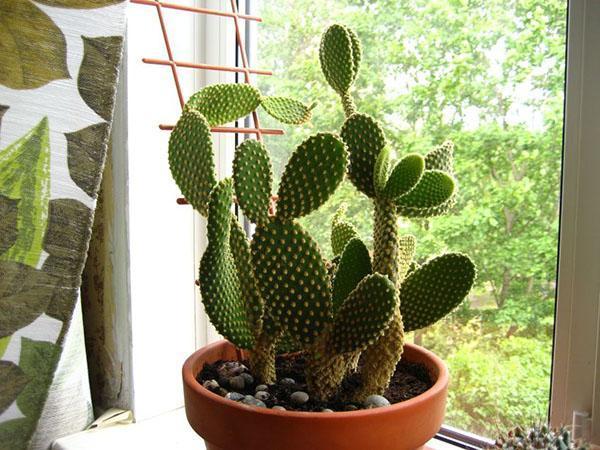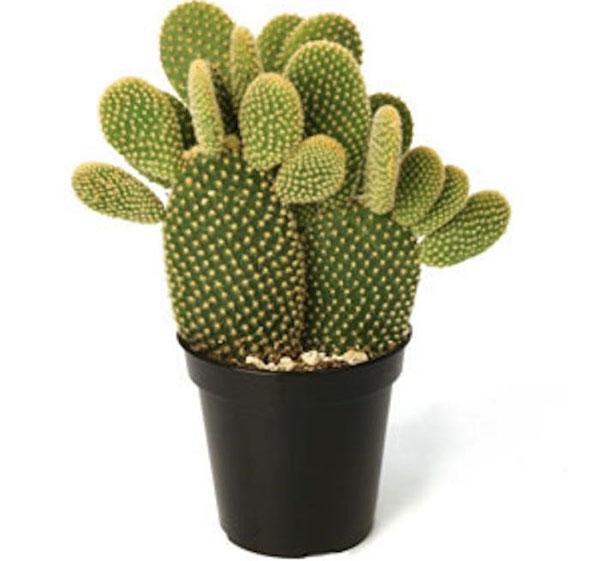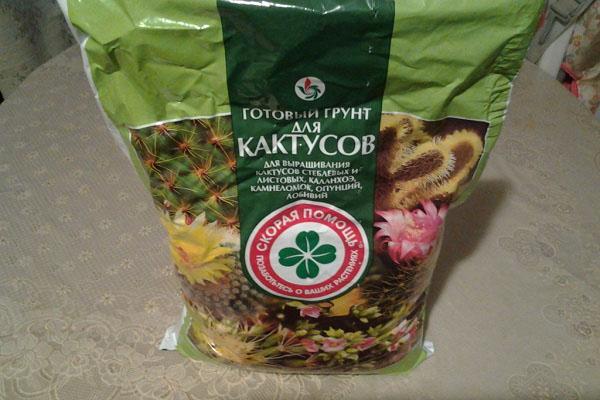Caring for prickly pear at home: reproduction, watering, feeding, temperature
 Proper care of prickly pear at home is the key to a beautiful and healthy plant. In order for a flower to please for a long time with its incredibly beautiful buds, you should adhere to the watering regime and fertilize in a timely manner.
Proper care of prickly pear at home is the key to a beautiful and healthy plant. In order for a flower to please for a long time with its incredibly beautiful buds, you should adhere to the watering regime and fertilize in a timely manner.
Temperature control and lighting

Opuntia stores moisture in the foliage, so prolonged drought is not terrible for it.
 This type of cactus grows well on soils, even with a slightly acidic reaction, which are not very fertile. It is important that the soil in the chosen location is loose and well-drained. It will not be superfluous to add pebbles or sand to the planting site so that the water does not stagnate and the roots of the cactus do not rot.
This type of cactus grows well on soils, even with a slightly acidic reaction, which are not very fertile. It is important that the soil in the chosen location is loose and well-drained. It will not be superfluous to add pebbles or sand to the planting site so that the water does not stagnate and the roots of the cactus do not rot.
Temperature
 If you grow a plant indoors, then in the summer it will feel comfortable in any part of the apartment, regardless of the weather. In the winter months, the optimum temperature for prickly pears should be 6-70 C, not higher. In the garden or on the lawn, the plant will survive in frosts not lower than -10 ° C. If the winter is more severe, the prickly pear is covered with branches, fallen leaves.
If you grow a plant indoors, then in the summer it will feel comfortable in any part of the apartment, regardless of the weather. In the winter months, the optimum temperature for prickly pears should be 6-70 C, not higher. In the garden or on the lawn, the plant will survive in frosts not lower than -10 ° C. If the winter is more severe, the prickly pear is covered with branches, fallen leaves.
Lighting
 If the prickly pear grows in the house, it needs to find a place with the bright sunlight that it needs to grow well. Only the plant must be "accustomed" to it gradually. If the cactus is planned to be planted on the site, then you will need to choose the most illuminated area, which will be protected from the wind.
If the prickly pear grows in the house, it needs to find a place with the bright sunlight that it needs to grow well. Only the plant must be "accustomed" to it gradually. If the cactus is planned to be planted on the site, then you will need to choose the most illuminated area, which will be protected from the wind.
Caring for prickly pear at home
A beautiful cactus is quite unpretentious in content. For the prickly pear flower, two conditions are important: good lighting and watering without excess moisture. The cactus has no more requirements.
To clean your hands of invisible thorns, you should use warm water and regular soap.
Watering prickly pear
 Irrigation is an important point in the care of prickly pear cactus. The prickly flower should be watered regularly. When kept at home in the warm half of the year, prickly pears are irrigated only when the soil dries well. If the air temperature drops to +60 C, you can completely forget about watering the plant. In winter, a cactus may wither away from lack of moisture, but as soon as it is watered, it will become elastic again.
Irrigation is an important point in the care of prickly pear cactus. The prickly flower should be watered regularly. When kept at home in the warm half of the year, prickly pears are irrigated only when the soil dries well. If the air temperature drops to +60 C, you can completely forget about watering the plant. In winter, a cactus may wither away from lack of moisture, but as soon as it is watered, it will become elastic again.
Fertilizer
 Cactus feed is applied starting from March-April, and throughout the summer. For this, it is better to use fertilizers in which a low percentage of compounds nitrogen... After feeding, take a break for about 14 days. Such fertilization will allow the plant to receive all the necessary trace elements, which will lead to abundant flowering.
Cactus feed is applied starting from March-April, and throughout the summer. For this, it is better to use fertilizers in which a low percentage of compounds nitrogen... After feeding, take a break for about 14 days. Such fertilization will allow the plant to receive all the necessary trace elements, which will lead to abundant flowering.
If the soil has an alkaline or neutral reaction, several crystals of citric acid are added to the water for irrigation; it can be replaced with juice from fresh lemon.
Pests
 The most common disease in thorny plants is a fungal infection. Its signs are mold, darkened areas. If they appear on prickly pears, the plant will have to be destroyed, and the rest of the specimens should be immediately sprayed or poured with a fungicide.
The most common disease in thorny plants is a fungal infection. Its signs are mold, darkened areas. If they appear on prickly pears, the plant will have to be destroyed, and the rest of the specimens should be immediately sprayed or poured with a fungicide.
The fungus often attacks the prickly pear root.If small "pimples" have formed on the roots, it means that nematodes have settled there. All swellings are removed, the root is washed under warm water, sprinkled abundantly with charcoal or activated charcoal, and then planted in new soil.
Also, whitefly, aphids settle on a cactus, spider mite... Only special chemicals can cope with these pests. If the prickly pear is properly looked after without disturbing the irrigation regime, then such problems will not arise.
Planting and breeding prickly pears
 Opuntia propagates in two ways: using seeds and cuttings. It is allowed to transplant a cactus throughout the year into purchased or self-prepared soil. An overgrown plant that does not fit in the pot is a sign of a substrate replacement.
Opuntia propagates in two ways: using seeds and cuttings. It is allowed to transplant a cactus throughout the year into purchased or self-prepared soil. An overgrown plant that does not fit in the pot is a sign of a substrate replacement.
Before carrying out the transplant procedure, you need to wait until the soil is dry. Then place the cactus in a dark place for several days and do not water it.
Among the cacti there is a kind of frost-resistant prickly pear, it is suitable for growing outdoors.
Propagation of prickly pear by cuttings
 This breeding method is resorted to in the spring and summer. Large, overgrown shoots are carefully separated from the mother plant. The cut must be sprinkled with coal. The cuttings are left in the open air for an hour. This time will be enough for the cut sites to dry well and become covered with a protective film.
This breeding method is resorted to in the spring and summer. Large, overgrown shoots are carefully separated from the mother plant. The cut must be sprinkled with coal. The cuttings are left in the open air for an hour. This time will be enough for the cut sites to dry well and become covered with a protective film.
Then the cuttings are deepened by 2-3 cm into the prepared soil. The pot is covered with a "cap" made of glass or film to create a greenhouse with an internal temperature of about 100 C. To maintain a high level of humidity, the cuttings are periodically sprayed with warm, settled water.
From time to time, the greenhouse with prickly pears is aired. Once the sprouts have produced good, strong roots, they can be planted in suitable sized pots.
Seed propagation
 Opuntia has rather specific grains, covered with a very hard shell. But despite this, it is very easy to grow prickly pear from seeds.
Opuntia has rather specific grains, covered with a very hard shell. But despite this, it is very easy to grow prickly pear from seeds.
Before sowing, the grain should be processed to soften the skin a little. To do this, you need to soak them in water for several days or rub them with sandpaper.
Also, they are treated with a light solution of potassium permanganate to disinfect the inoculum. The seeds are buried in the soil mixture, kept at 200 From before germination. Like cuttings, sown grains are regularly ventilated and moistened. When shoots appear, they are seated in separate containers.
Transplant of prickly pear
 This should be done as needed, because the plant adapts to new conditions for a long time. To reduce stress, transshipment is carried out from dry soil to new dry soil. Then the plant is transferred to a darkened place, kept there for 2 or 3 weeks. The first watering is carried out no earlier than a week later.
This should be done as needed, because the plant adapts to new conditions for a long time. To reduce stress, transshipment is carried out from dry soil to new dry soil. Then the plant is transferred to a darkened place, kept there for 2 or 3 weeks. The first watering is carried out no earlier than a week later.
It is best to transplant prickly pears during the spring months.
As a houseplant, prickly pear is prone to flowering, but for this the cactus will need favorable conditions. After the frost stops, it is better to move the pot outside. The sun's rays and good ventilation will push the prickly pear to form buds.
Choosing a container for planting
 Most growers prefer to use shallow, but wide containers when growing cacti. Their minus is the rather rapid drying out of the soil, although several specimens can be planted in such a pot at once.
Most growers prefer to use shallow, but wide containers when growing cacti. Their minus is the rather rapid drying out of the soil, although several specimens can be planted in such a pot at once.
 In fact, prickly pears will work with any pot, but with good holes in the bottom for drainage. You can also make one place for small holes, but large. To prevent water from flowing out of the flowerpot and spoiling the windowsill or furniture, a layer of pebbles should be poured onto the bottom of the pot.
In fact, prickly pears will work with any pot, but with good holes in the bottom for drainage. You can also make one place for small holes, but large. To prevent water from flowing out of the flowerpot and spoiling the windowsill or furniture, a layer of pebbles should be poured onto the bottom of the pot.
If you follow all the conditions for growing a cactus, then in a short time it will delight you with unusual flowers that will decorate any room.